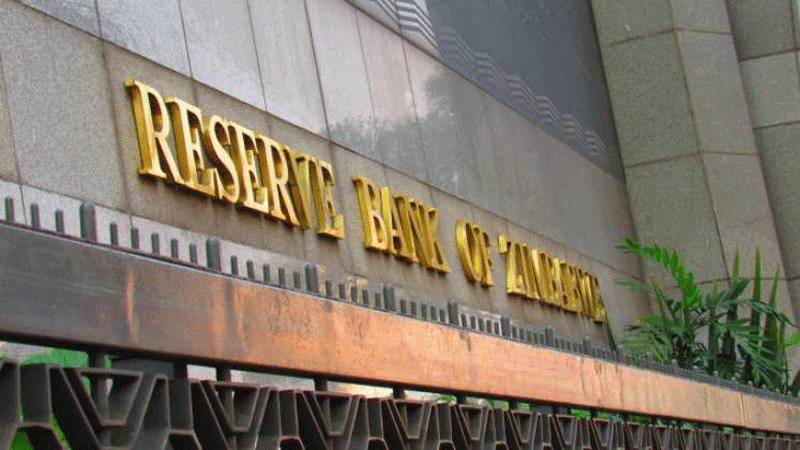
THE Reserve Bank of Zimbabwe (RBZ) recently announced its plan to introduce a gold-backed digital currency on May 8 2023. This announcement has generated a lot of interest among economists and investors, as it is seen as a potential solution to the economic challenges that Zimbabwe has been facing.
One of the key challenges that Zimbabwe has been experiencing is inflation and soaring exchange rate, which has led to a significant devaluation of the local currency.
This has eroded people's purchasing power and created an unstable economic environment. The parallel market exchange rate between the US dollar and the Zimbabwean dollar currently stands at US$1:ZW$2 100.
The introduction of a gold-backed digital currency is seen as a way to stabilise the local currency and address some of the challenges that the country is facing.
According to the RBZ governor John Mangudya, the tokens will be fully backed by physical gold held by the central bank and available for sale, through banks, in both foreign currency and the Zimbabwe dollar.
The gold-backed digital tokens held in either e-gold wallets or e-gold cards will be tradable and capable of facilitating person-to-person (P2P) and person-to-business (P2B) transactions and settlements.
The pricing of the gold-backed digital tokens in foreign currency shall remain informed or guided by the international gold price as determined by the London Bullion Market Association (LBMA) PM fix, and payment for the gold-backed digital tokens or physical gold coins in Zimbabwe dollar shall remain at the current 20% margin above the willing-buyer willing-seller interbank midrate.
The gold-backed digital tokens are intended to supplement actual currencies and reach more people, particularly low-income people who cannot purchase genuine gold coins, and will reduce demand for foreign currency and give Zimbabweans a more stable store of value.
- Zimbabwe needs to rethink economic policies
- Zimbabwe needs to rethink economic policies
- Rampaging inflation hits Old Mutual . . . giant slips to $9 billion loss after tax
- Monetary measures spur exchange rate stability: RBZ
Keep Reading
Benefits of the digital currency
One of the potential benefits of a gold-backed digital currency is its ability to mitigate inflationary pressures. Zimbabwe has been experiencing hyperinflation over the past years, leading to rising prices for goods and services.
This has reduced the purchasing power of consumers and increased costs for businesses. By introducing a gold-backed digital currency, the RBZ hopes to stabilise prices and reduce inflationary pressures over time.
A gold-backed digital currency is a type of cryptocurrency that is backed by gold, which provides a certain level of stability and security.
The value of the digital currency is directly linked to the value of gold, which can provide a hedge against inflation and other economic challenges. Because the value of the currency is tied to physical gold reserves, it is less susceptible to fluctuations in market conditions or changes in government policy. This could help to stabilise the economy over the long-term.
Another potential benefit of a gold-backed digital currency is its ability to provide greater transparency and accountability in monetary policy. Because the value of the currency is tied to physical assets, it would be easier for consumers and businesses to understand how monetary policy decisions are being made and how they are likely to impact the economy. This could help to build trust in the financial system and promote economic stability.
The introduction of the gold-backed digital currency is expected to complement the Mosi-oa-Tunya gold coins as an alternative investment avenue.
When the RBZ introduced gold coins, it was able to mop out excess liquidity in the economy, which in turn stabilised the exchange rate and inflation over a certain period.
The introduction of the gold-backed digital currency is expected to have a similar impact on the economy. It will help to mop out local currency liquidity to a certain extent, subject to available quantity. This will, in turn, help to stabilise Zimbabwean dollar inflation.
However, measuring the impact of the gold-backed digital currency on inflation may be complex, as the Zimbabwe National Statistics Agency (Zimstat) abolished Zimbabwean dollar inflation statistics and adopted a blended model.
It would be imperative to monitor exchange rate movement on the parallel market, as it is a clear reflection of the monetary policy stance.
Potential risks/challenges
The introduction of the gold-backed digital currency is not without its risks or challenges, however. Any better alternative created to the local currency will always have the risk of weakening it further.
So, the first risk of the digital currency will be to further weaken the local currency. This is because the fundamental weaknesses of the local currency are not being addressed by the Monetary Policy Committee (MPC), as evidenced by the continued printing of the currency despite denials to the contrary.
Moreover, having an official exchange rate is deceptive because the actual rate is being determined by market forces hence the use of parallel market rate in most instances.
To stabilise the local currency, the RBZ needs to eliminate rent-seeking behaviour and let market forces decide the accurate value of the currency.
The RBZ’s persistent printing of ZW$ and providing discount windows for the official rate both contribute to the currency's devaluation and its status as a commodity rather than legitimate money.
To stabilise the currency and prevent further devaluation, both currency printing and discount windows must be dealt with simultaneously.
Additional factors contributing to the decline of the local currency include structural and institutional changes. Structurally, the economy has become predominantly informal, with a vast majority of formal businesses, especially manufacturers, bypassing traditional retailers and selling directly to the informal sector.
Institutionally, for example, Zesa is now demanding US dollar payments from most commercial businesses, regardless of whether they earn US dollar domestically or from exports.
This move was initiated by the government’s decision to dollarise Zimbabwe Revenue Authority (Zimra), and now other organisations are following suit.
Businesses that pay with local currency are finding it increasingly difficult to operate, while those using US dollar find it easier to conduct business.
Therefore, the current policy environment is further weakening the local currency and promoting the use of US dollar, and the introduction of the digital currency will only add to the local currency's decline.
Another challenge is ensuring that the digital currency is widely adopted by consumers and businesses. This will require a significant marketing effort to promote the benefits of using the gold-backed digital currency. Consumers and businesses will need to be educated about how the currency works and how it can benefit them.
Recommendations for success
To ensure the success of digital currency, the following can be taken into consideration:
Increase transparency: The RBZ should increase transparency by providing more information about the gold reserves backing the digital currency. This will help to build trust and confidence in the new currency.
Promote financial literacy: The RBZ should embark on a comprehensive campaign to educate the public about the gold-backed digital currency. This will ensure that the public understands the benefits and risks associated with the currency.
Develop a regulatory framework: The RBZ should develop a regulatory framework for the gold-backed digital currency. This will ensure that the currency is not used for illegal activities such as money laundering and terrorism financing.
Implement policies to curb inflation: While the introduction of the gold-backed digital currency will help to curb inflation, it is important for the RBZ to implement other policies to address the root causes of inflation. This could include reducing government spending, promoting foreign investment, and addressing corruption.
Monitor the impact of the currency: The RBZ should monitor the impact of the gold-backed digital currency on the economy. This will enable the bank to make adjustments as needed to ensure the currency is achieving its intended goals.
In conclusion, the introduction of the gold-backed digital currency by the Reserve Bank of Zimbabwe is a bold move aimed at stabilising the local currency in an inflationary environment.
While there are risks associated with the currency, the potential benefits are significant. By taking steps to enhance transparency, promote financial literacy, and develop a regulatory framework, the RBZ can help to ensure the success of the currency.
Zuze writes in his personal capacity. His interests are in socio-economic policies, public finance management, informal sector, domestic resource mobilisation, mineral resource governance, illicit financial flows and taxation. These weekly New Perspectives articles, published in the Zimbabwe Independent, are coordinated by Lovemore Kadenge, an independent consultant, managing consultant of Zawale Consultants (Pvt) Ltd, past president of the Zimbabwe Economics Society and past president of the Chartered Governance & Accountancy Institute in Zimbabwe (CGI Zimbabwe). — [email protected] or mobile: +263 772 382 852.











